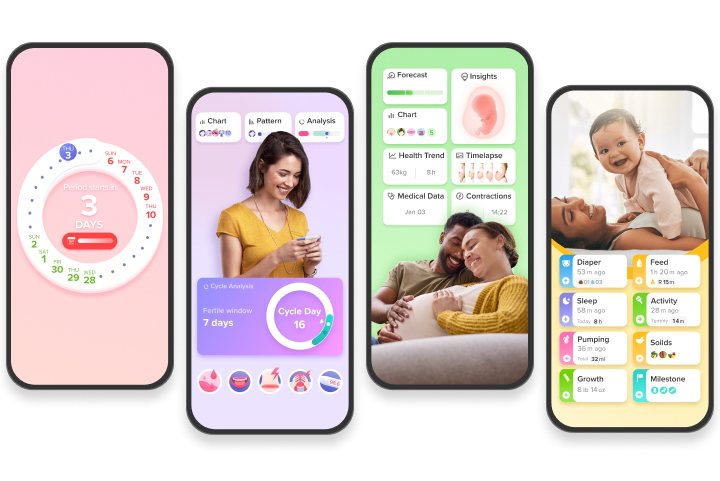Using an ovulation test (OPK) is a valuable tool when trying to conceive, as it can assist in pinpointing your most fertile days. Used together with the Glow app, ovulation tests can pinpoint the ovulation and help couples maximize their chances of conceiving naturally.
Here’re some key benefits of using ovulation test:
- Predict Timing: Identify your most fertile window.
- Ease of Use: Simple at-home testing, similar to a home pregnancy test.
- Quick Results: Get results within minutes.
- Increased Chances: Time intercourse to enhance conception chances.
- Cost-Effective: Affordable and available over-the-counter.
- Non-Invasive: A non-invasive method for fertility tracking.
Below are some of the most frequently asked questions about OPKs in the Glow Community.
How do ovulation tests work?
The LH (Luteinizing Hormone) in a woman’s urine increases sharply in the middle of the menstrual cycle. This surge triggers ovulation, the release of an egg. According to WHO experts, LH testing reliably detects ovulation. Ovulation occurs roughly 36 hours after a positive test.
The ovulation test contains antibodies that specifically react with LH. When dipped in a urine sample, the urine moves along the strip. One line is the control line and the second line shows whether you are ovulating or not. The test line will be as dark or darker than the control line when the LH peak (positive) is detected. Always be sure to read the instructions from the manufacturer carefully!
When (on which cycle day) should I start taking ovulation tests?
Determining the Right Day to Begin
To find out the best day to start using ovulation tests, you’ll need to know the length of your menstrual cycle. Most ovulation test kits come with a guide that recommends when to start testing based on your cycle length. You can refer to the below table if you are familiar with your cycle length.
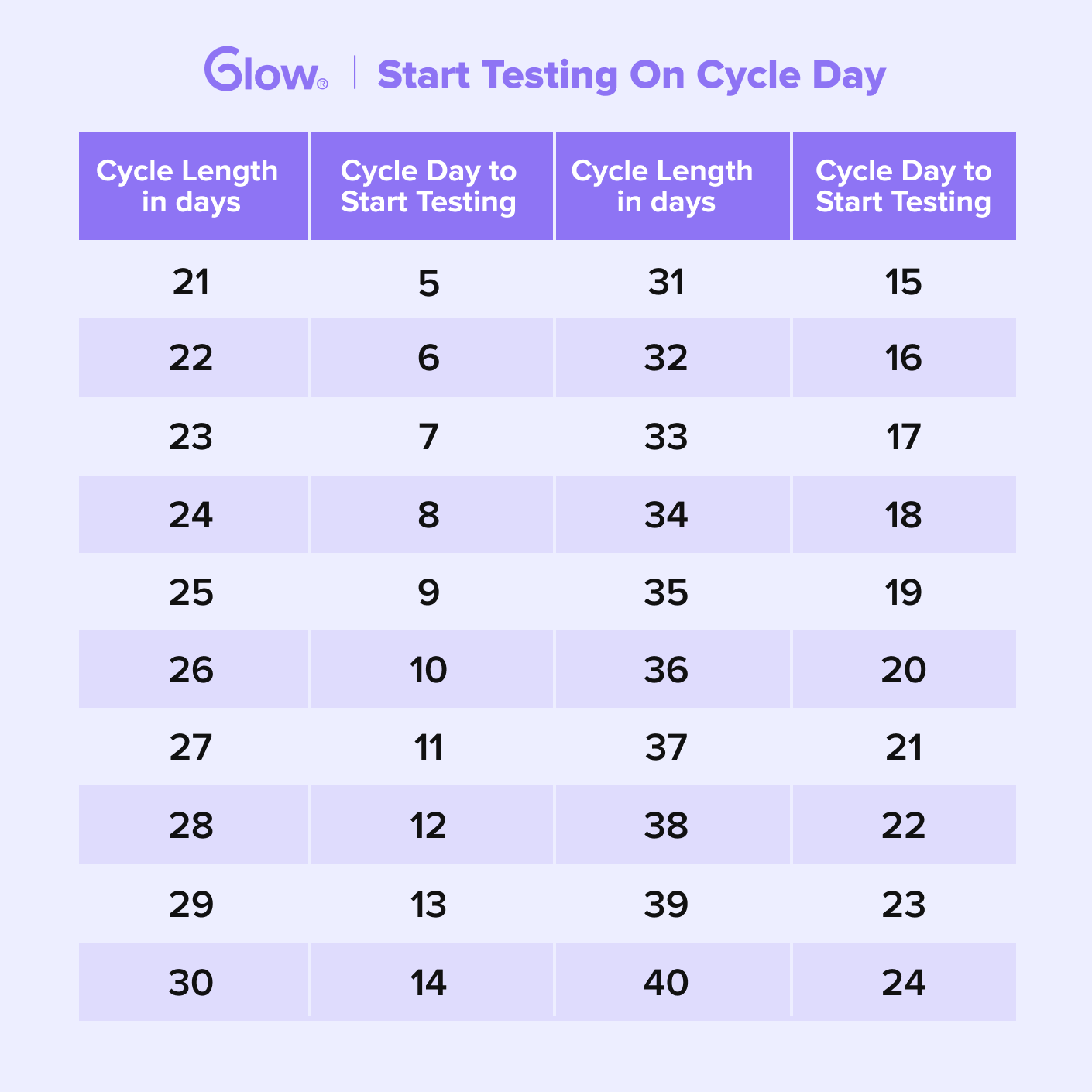
Using the Glow App
Glow can make ovulation testing a breeze. Here’s how to use it effectively:
- Understand your cycle: Glow analyzes your cycle data to identify your cycle length, regularity, and patterns.
- Predict Your Fertile Window: Glow forecasts your most fertile days, helping you plan when to use your ovulation tests.
- Receive Reminders: Glow sends you notifications to remind you when it’s time to test.
Stay organized and let Glow guide you through your ovulation testing for the best results.
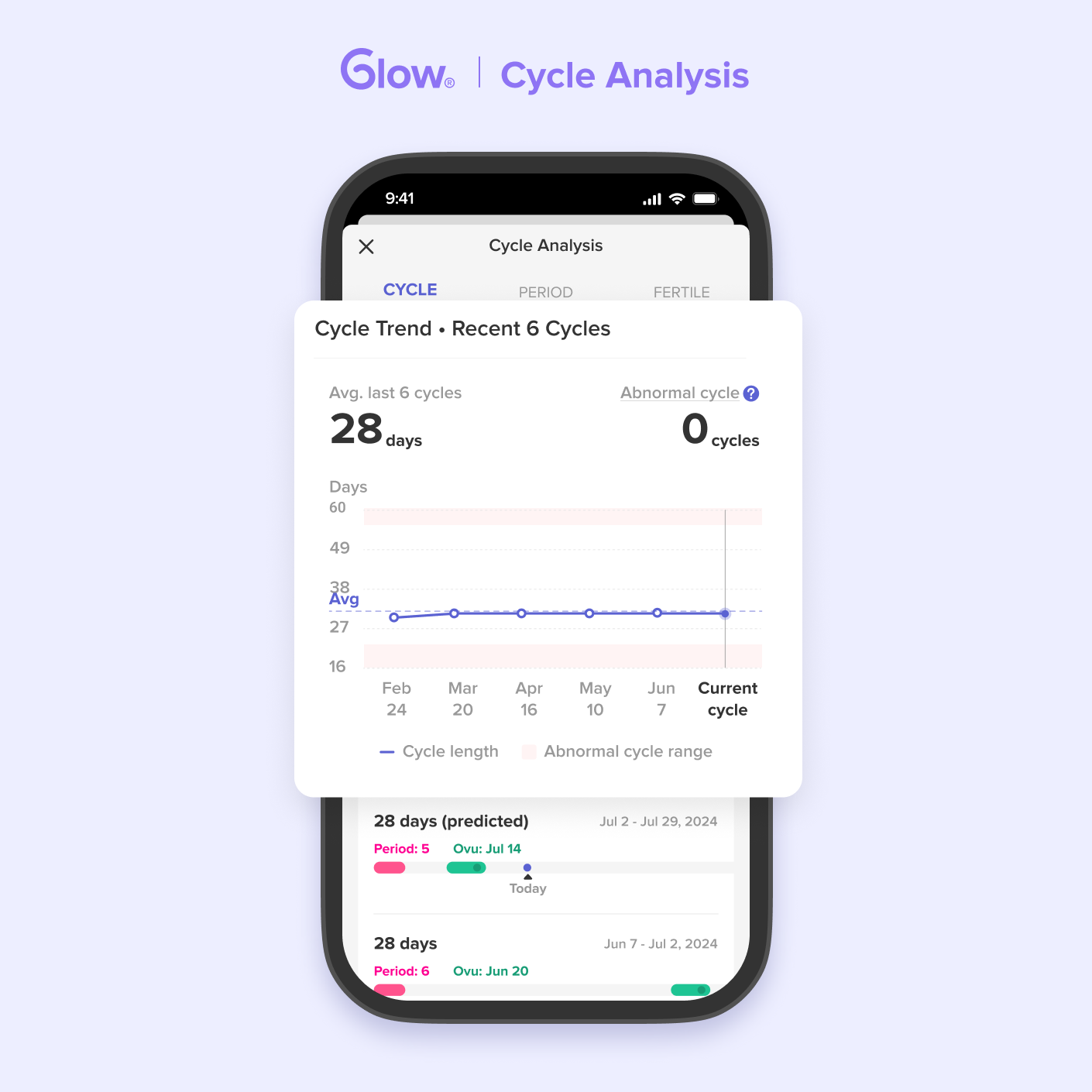
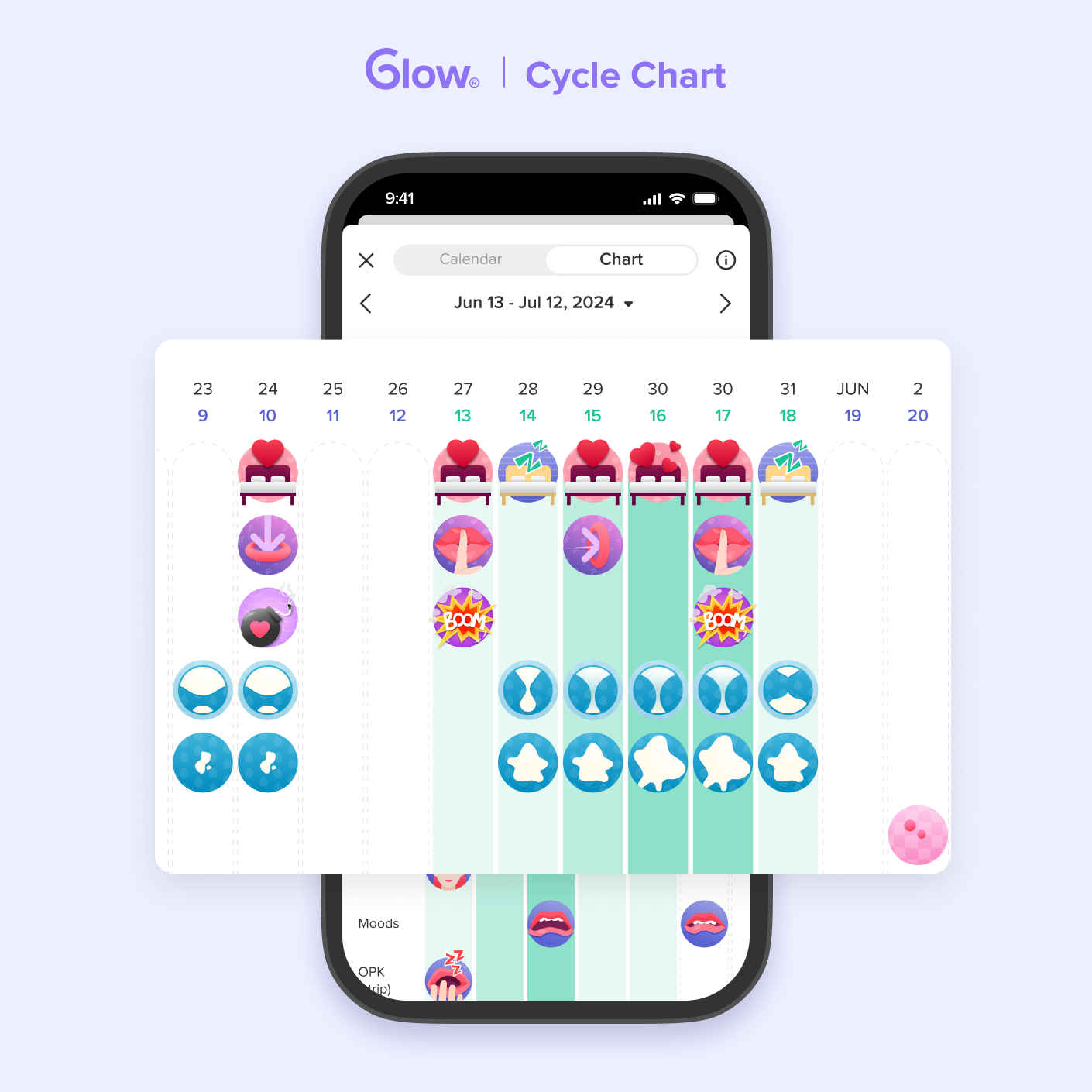
When (at what time of day) should I take an ovulation test?
You can take an ovulation test at any time of day. Unlike a pregnancy test, it isn’t necessary to take your ovulation test in the morning. However, you should test at approximately the same time each day. Drinking excessive amounts of liquid can dilute the LH in your urine, so it’s best to reduce your liquid intake for two hours before testing.
Some women opt to perform ovulation tests multiple times a day to enhance their chances of detecting the LH surge. The LH surge is a brief increase in luteinizing hormone levels that triggers ovulation. By testing more frequently, they can better identify this surge as it happens. For more information, see Beyond Daily: Why Are More Women Taking Multiple Ovulation Tests?
Make sure to stock enough ovulation tests in advance, so you can test as often as needed without running out of supplies.
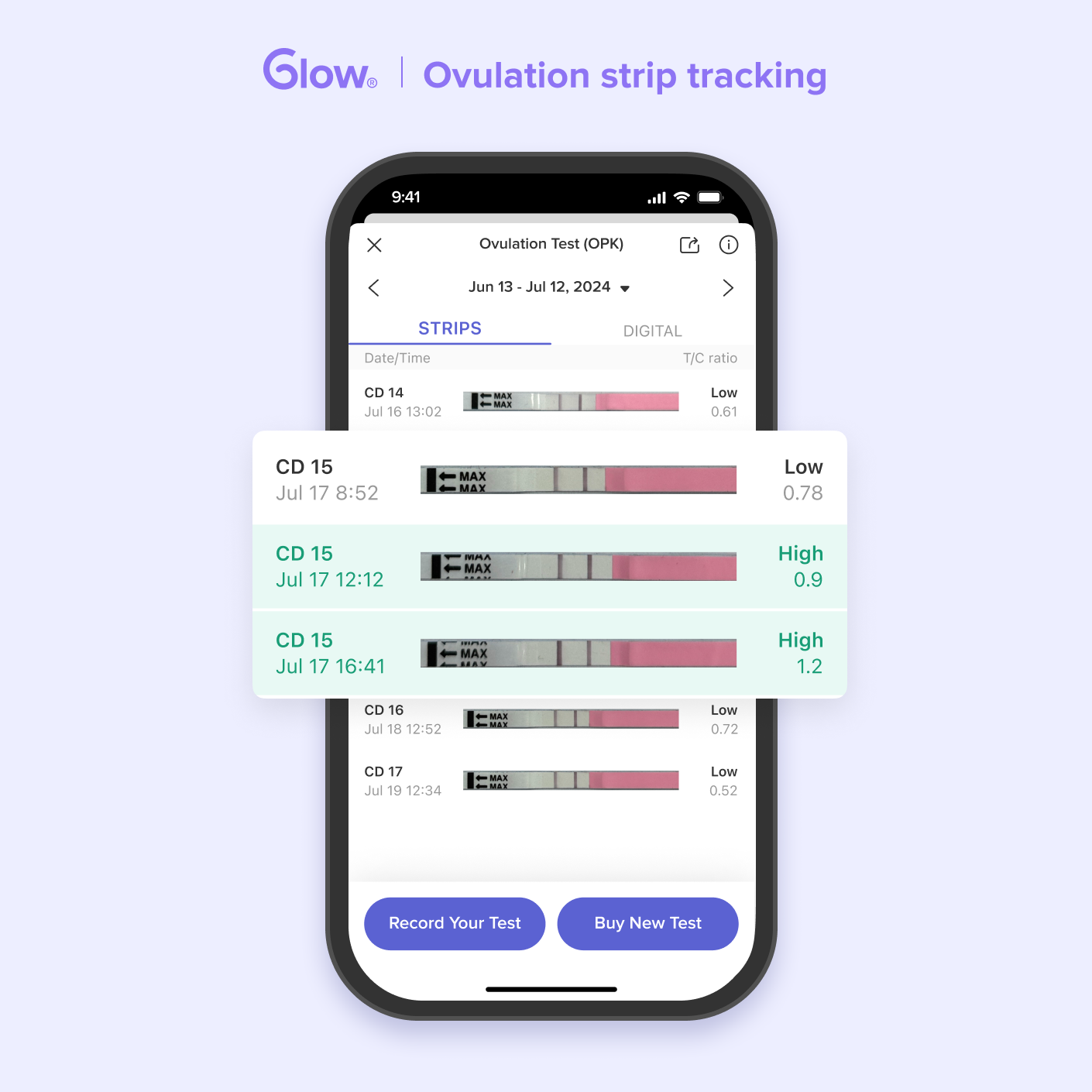
How to take an ovulation test?
Again, pls make sure to read the instructions given by the manufacturer. Here’s the general precedure of taking an ovulation test.
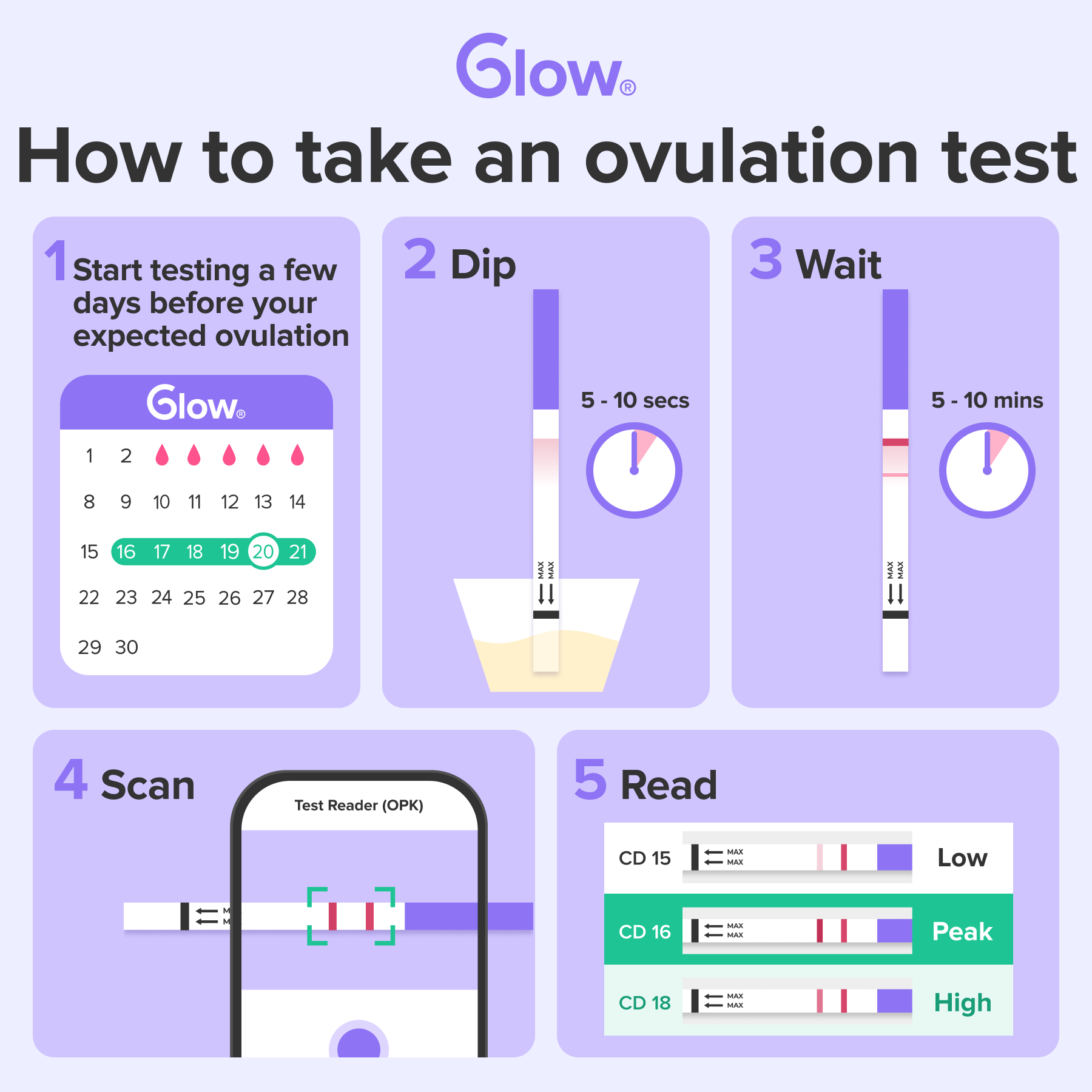
How to read my test result?
To determine your ovulation test result, you must compare the color intensity of the test line (T) to the control line (C). The control line ensures the test worked correctly, and the test line captures your current LH level.
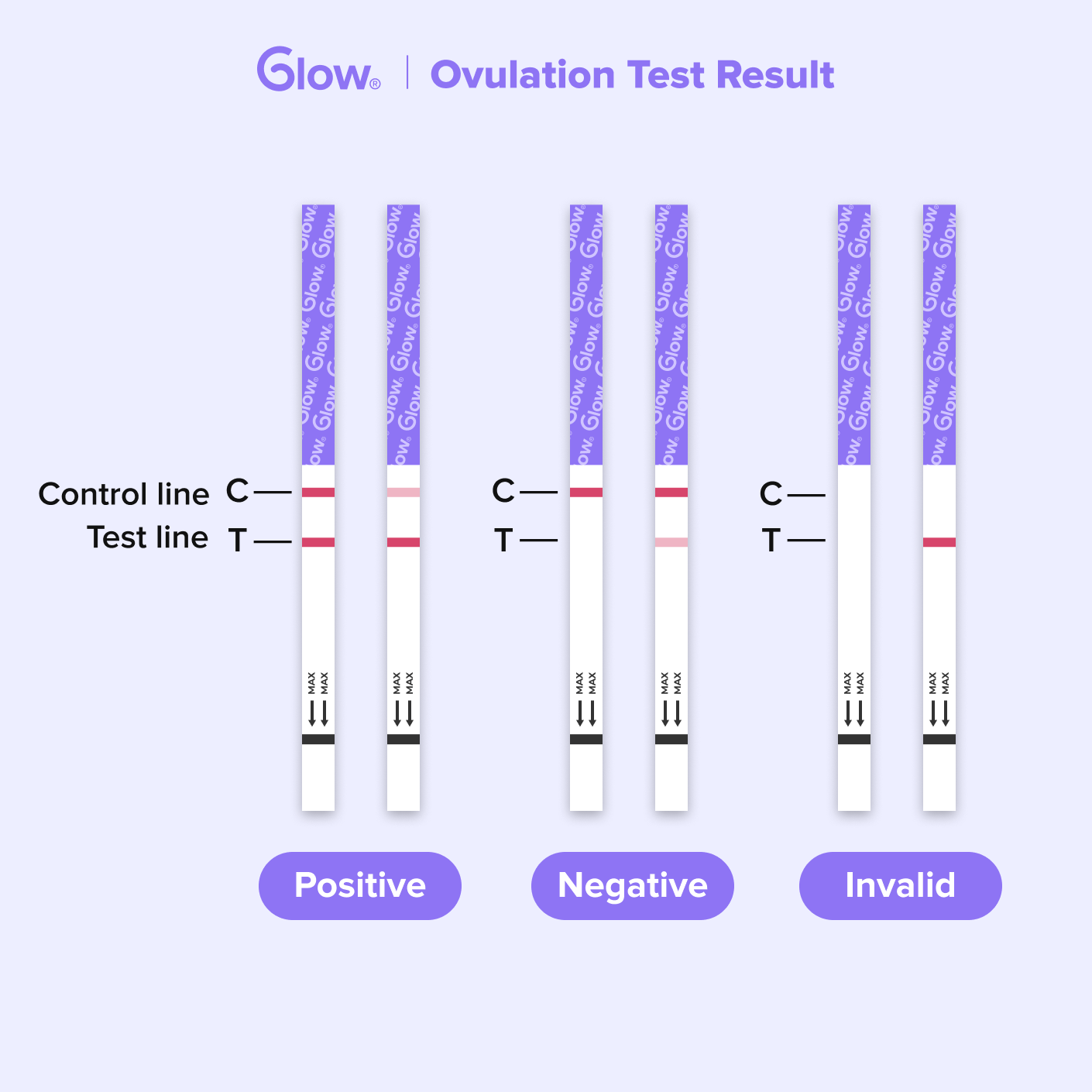
Positive (LH Surge): If the test line (T) is as dark as or darker than the control line (C), your LH surge is detected. Ovulation is likely to occur within 24-48 hours.
Negative (No LH Surge): If only the control line (C) appears or the test line (T) is lighter than the control line (C), your LH levels are low. Test again tomorrow.
Invalid: If no lines or only the test line (T) appear, the test is invalid. Use a new test.
My ovulation test NEVER showed LH surge (positive result) – now what?
Yeah, that happens sometimes. It could be because you did not ovulate this cycle. Or it could be because you missed your surge (it happened in the afternoon but you tested in the morning.)
This is why it is so important to combine OPKs with other fertile symptoms – did you have egg white cervical mucus? Did your basal body temperature spike? What is the state of your cervix? OPKs are fine, but they are just one of many indicators of your ovulation.
When does an OPK not work?
Unfortunately, there are actually quite a few reasons why an OPK might not work correctly.
- OPK won’t work when certain fertility drugs are present in the body, such as the hormone hCG.
- OPK might not work for those over 40 years old. Some women over 40 have increased levels of LH in their systems, and that can throw off the test.
- OPK might not work for those with PCOS, since women with PCOS often have high LH levels to begin with.
